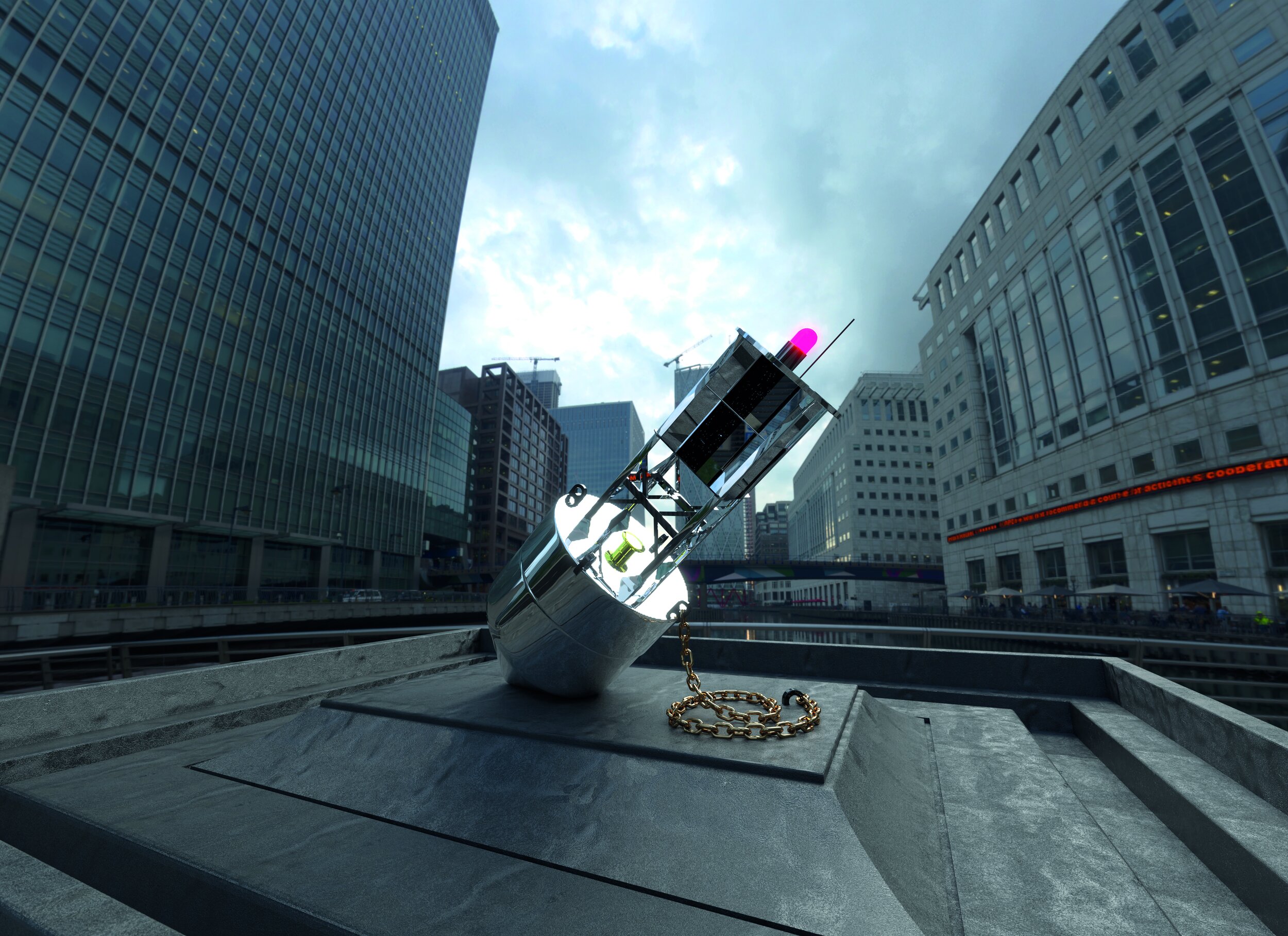Future Monument for New Towns
2020
Collaboration between Jesse Siegel/Jaehun Park appeared in issue #3 of SPREAD magazine.
In 2019 the New Town of Almere, in The Netherlands, designated its first official monument: The Almere Police Station, built in 1985 by Dutch super-star architect Rem Koolhaas. That made us think about how monuments are designated inside of some of our newest cities, how do buildings gain a monument status? How does it reflect upon the culture of these new developments? In the case of planned cities, we asked ourselves how we could create monuments for places which exist only as wild dreams and 3D renders.
Change is the one constant in New Towns. Town centers move, nature is modified, people migrate in and out, new neighborhoods popup at breakneck speed. With change in mind, we consider the ultimate change. The irreversible change to our living environment. For this project we decide to offer a warning for this unfettered growth. We name this an open source monument for New Towns: The PONR Monument. ‘The Point of No Return’ is the point beyond which we must follow the course as turning back is too dangerous. This is not a place you would like to be. Here we use the naval buoy, a common safety device which allows vessels to navigate through dangerous situations, to be a beacon of safely navigating dangerous times.
The following is an open source monument that we offer to any New Town, existing or planned.
What are New Towns?
New Towns are cities or towns that are designed from scratch and built in a short period of time. They are designed by professionals according to a Master Plan on a site where there was no city before. This distinguishes a New Town from a ‘normal’ city that gradually grows and evolves over time. Also, New Towns are mostly the result of a political (top-down) decision. - International New Town Institute
You can download the monument 3D file here.
Jaehun Park
Born 1986 in Ulsan, South Korea - lives and works in Amsterdam, The Netherlands.
Jaehun is a Digital-Sculptor, Animator, Simulator. He utilizes 3D computer graphic animation/simulation to reveal fabricated reality in the virtual space. The main motivation starts from money-driven odd psychological environment factors. Through 3D animation and digital printing, he deeply reflects on ordinary objects and systematic space related to the ritual structure of post-capitalism and consumerism. He received a BFA from Seoul National University(SNU) in South Korea, and a MA in Artistic Research from the Royal Academy of Art (KABK), The Hague (NL).





